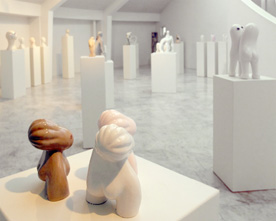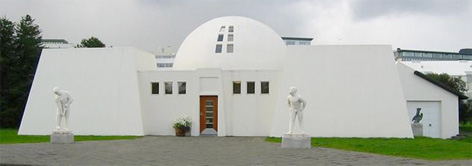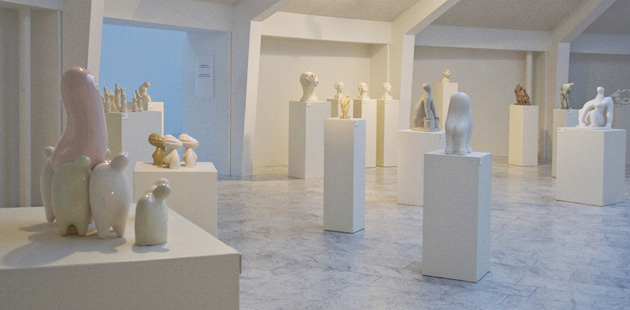
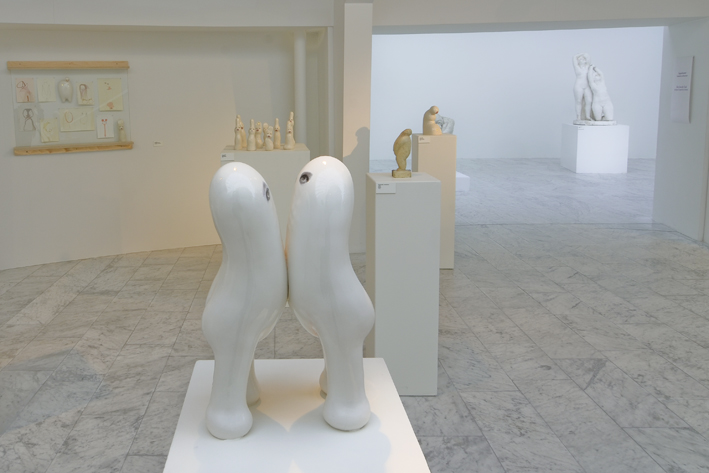
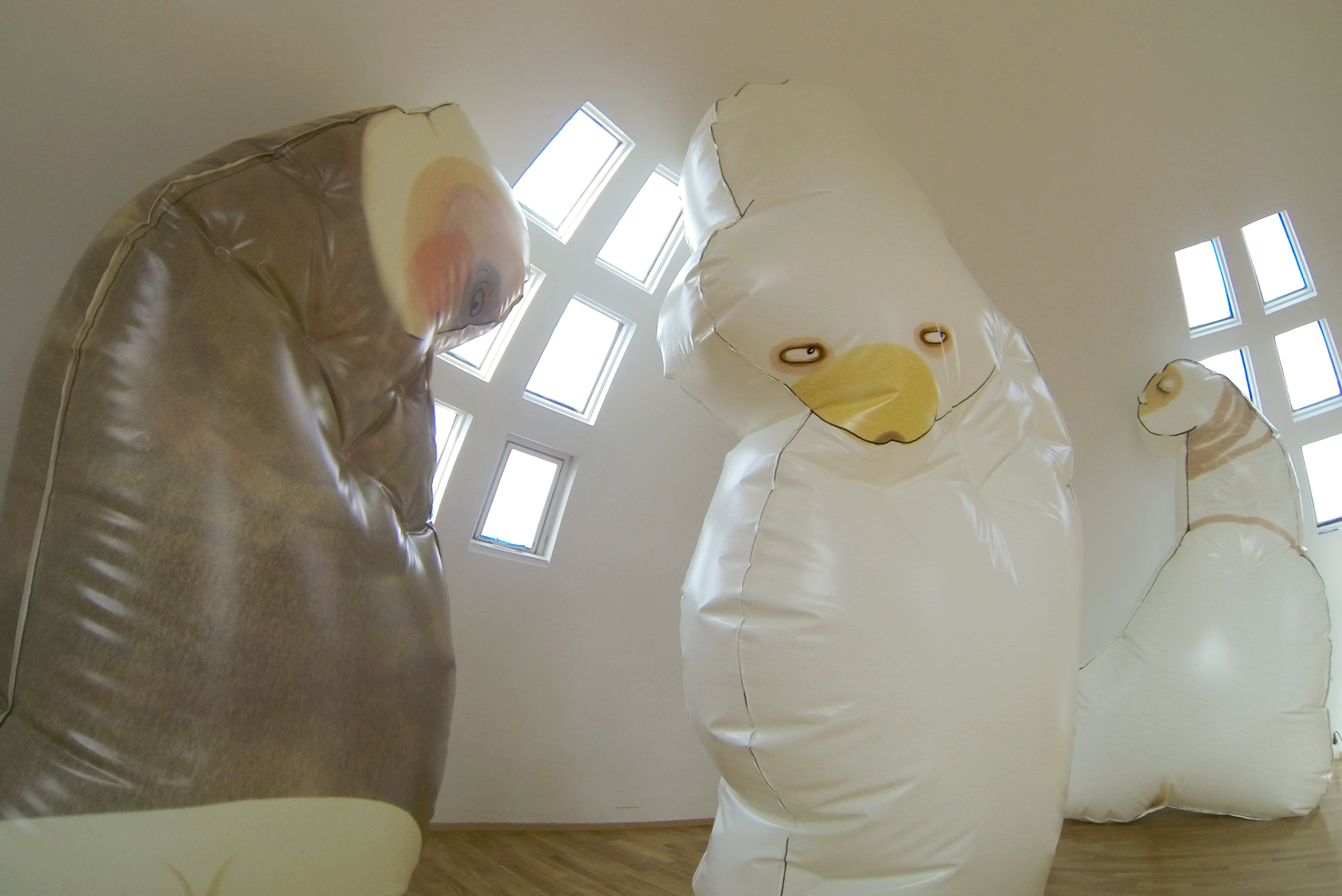
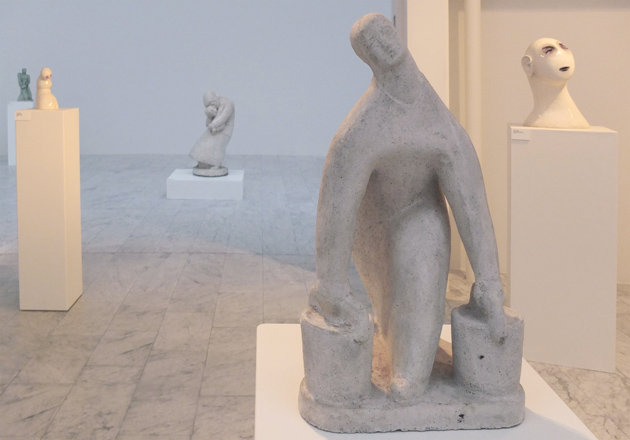
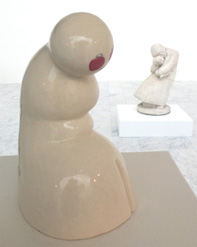
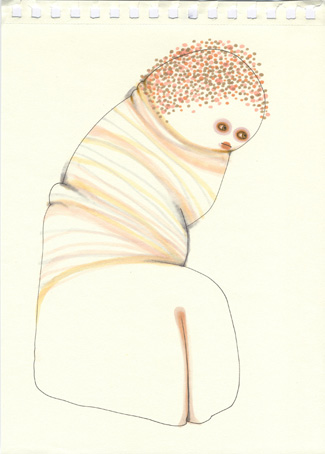
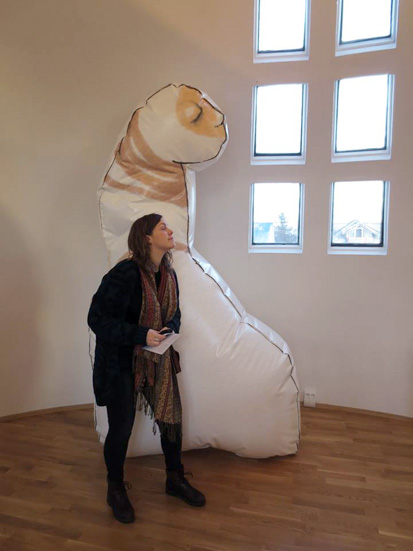
Anna’s exhibition at the Ásmundur Sveinsson Sculpture Museum presents an interplay with the sculptures of Ásmundur Sveinsson (1893-1982). She has also examined Ásmundur’s art in the context of his life and background, and contemplated a holistic view of his life and his art.
Ásmundur Sveinsson studied sculpture for six years at the Royal Swedish Academy of Arts under the tutelage of Carl Milles (1875-1955). After graduation he went to Paris to explore the latest artistic ideas, and then took them home with him to Iceland. Milles was one of Sweden’s most renowned sculptors, and in his homeland his works are familiar sights.
Anna Hallin knows the art of Carl Milles from her early years in Sweden, and thus the bond between the work of Milles and Ásmundur Sveinsson is vivid in her mind. As Ásmundur did later, Carl Milles built himself a combined home and studio, though on a much grander scale than the Icelandic artist. The architecture of Milles’ home drew on Italian tradition, while Ásmundur had traveled o Greece, where he was captivated by the domed buildings he saw there, which were so appropriate for a rugged barren landscape. Both artists placed great importance on the relationship of their buildings to their surroundings, when they created these settings for their work. For Ásmundur, the placement of his work was always of the greatest importance. He was of the view that the public had a right to enjoy art in public spaces, and he was a pioneer in that field in Iceland. In that context, Ásmundur’s art and that of Anna Hallin engage in a dialogue.
The Ásmundur Sveinsson Sculpture Museum has no work by Milles in its collection, but Milles’ influence may be seen in many of Ásmundur’s works. Classical forms and outlines are an important aspect of the sculptures of both artists, although the expression differs.In her work for Interplay, Anna has worked, among other things, with a sort of visual echoing of Ásmundur’s sculptures – for example the powerful flexed neck seen in a number of the artist’s pieces. Anna has also selected some of Ásmundur’s works to be exhibited in interplay with her own pieces. The airy quality of inflated three-dimensional drawings expresses well Anna’s attitude to disruption and the potential of form:two-dimensional drawings are enlarged, and imbued with different qualities.The huge inflated images are humorous and compelling in their approach. Their distended, contemporary character and material interacts whimsically with Ásmundur’s heavy, massy sculptures. In that context it is worth pointing out that Ásmundur’s approach was also new and avant-garde in his time, when he started working in concrete.
Anna Hallin, born in Sweden in 1965, has lived in Reykjavík since 2001. Anna holds master’s degrees in ceramic art from the University of Gothenburg in Sweden, and in fine arts from Mills College in Oakland, California. During her career Anna has taken part in many group shows in Iceland and elsewhere, and held solo exhibitions in Sweden, Finland and Germany, among other places. Works by Anna Hallin are in the collections of e.g. Gerðarsafn, the Reykjanes Art Museum and the National Gallery of Iceland.
For some years Anna has pursued her art in collaboration with her wife, artist Olga Bergmann, under the name Berghall; they exhibited their work e.g. at the National Gallery of Iceland in 2012.
Anna Hallin is a versatile artist, who works in a range of media. Sculpture and clay pieces are the constants in her work, while she also paints, draws and works with video and photography, where her three-dimensional pieces gain a different significance. She seeks her inspiration in art history, nature and culture and architecture and design. The collaboration between Anna and Olga Bergmann is not least in the context of art in public spaces, in connection with architecture; they have worked e.g. with the Arkibúllan architectural studio. An example of an art work in a public space is Berghall’s recent prizewinning proposal for a work for a new prison building, under construction at Hólmsheiði near Reykjavík.
Anna’s work, whether on paper or in clay, is characterised by organic forms. The rounded shapes of her sculptures, and her unexpected juxtaposition of contrasting elements, are reminiscent of the visual world of the Surrealists in the first half of the 20th century. Her clay pieces depicting rounded parts of the body recall the sculptures of Hans Bellmer, or the simple, graceful outlines of the art of Constantin Brancusi. In addition the natural, organic forms of Anna’s works spring from the outlines of molluscs, smooth and flexible. And the curved outlines are also inspired by the “streamlined” design of the mid-20th century; the pastel palette seen in some of her works evokes that era as well.
In her art Anna examines the relationship between phenomena, sometimes manifested in a specific system. Unexpected links between organic and manmade forms, or closed systems such as the circulatory system or a network of pipes, are brought to life in Anna’s hands, presenting a new perspective on a familiar world.Texti/Text: Ragna Sigurðardóttir
Translation Anna Yate
s
